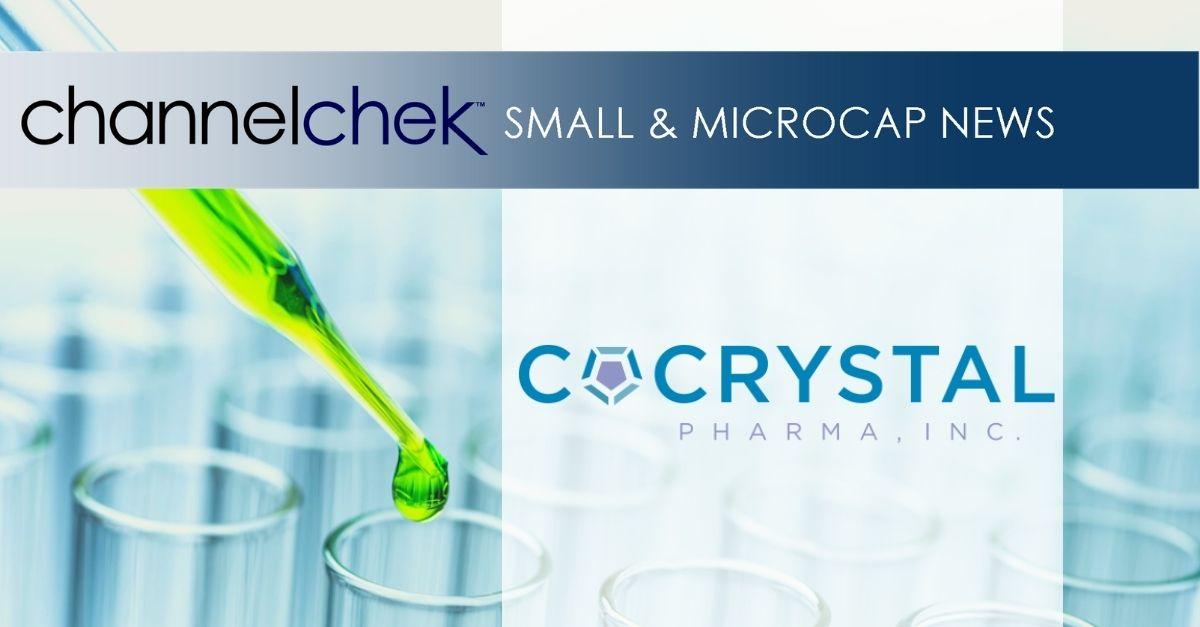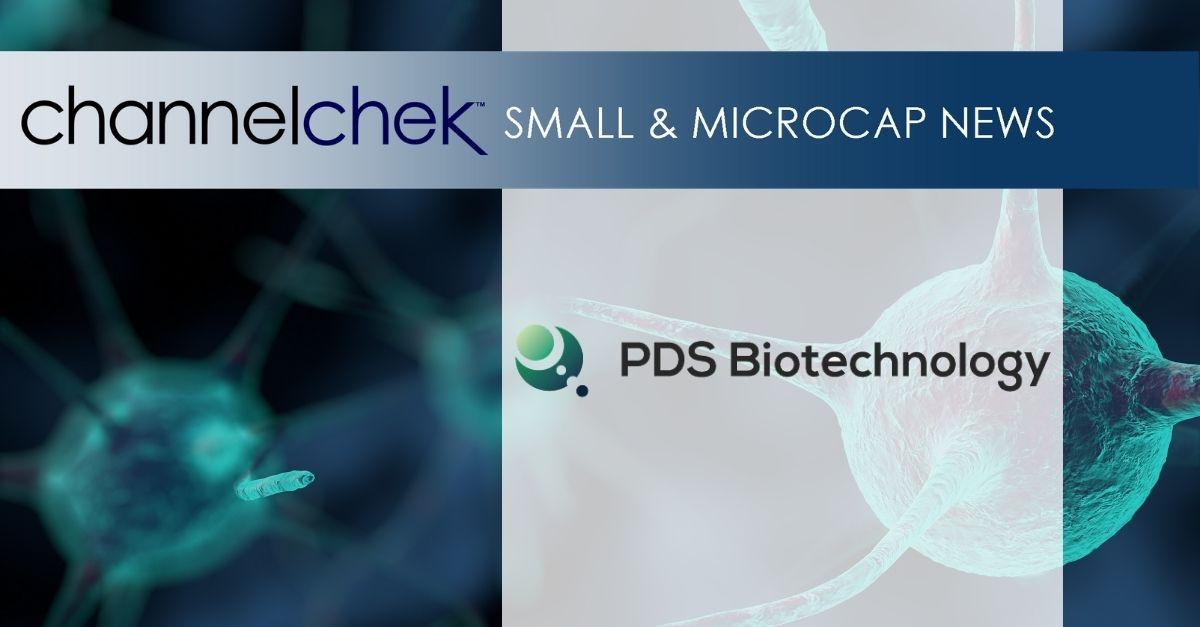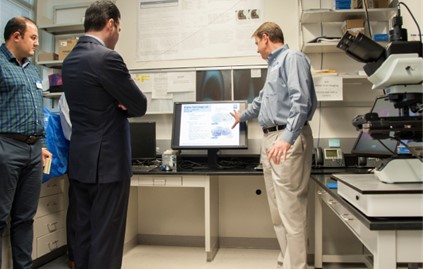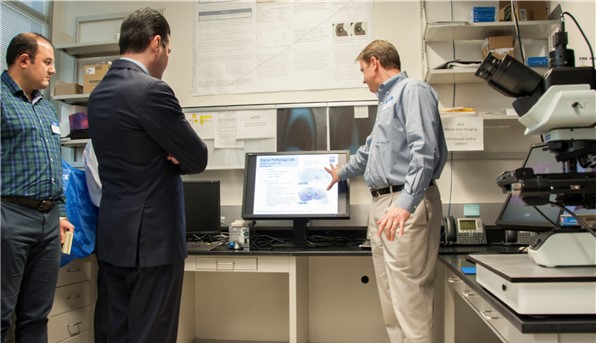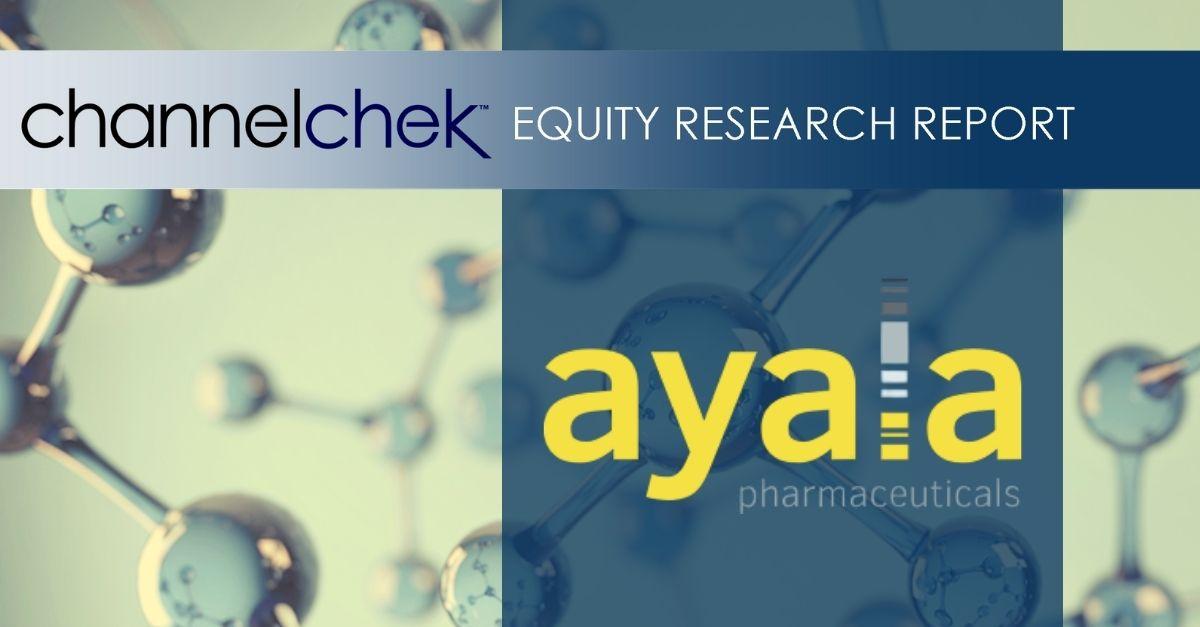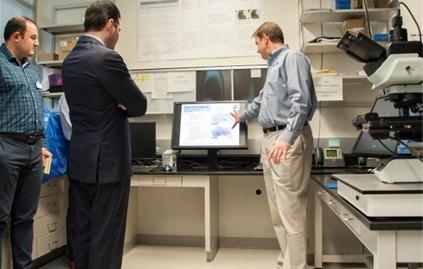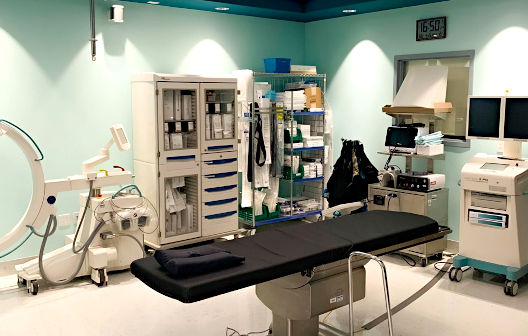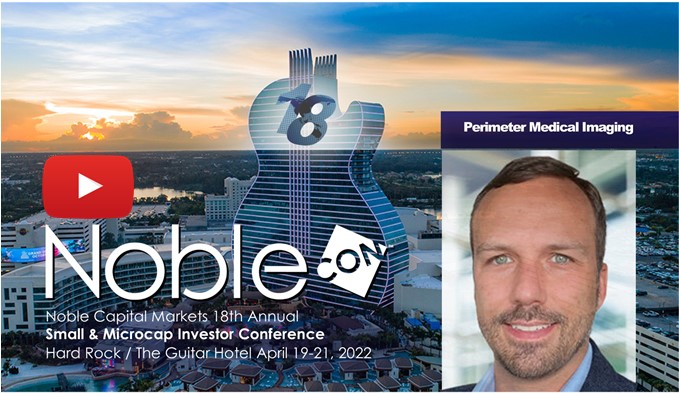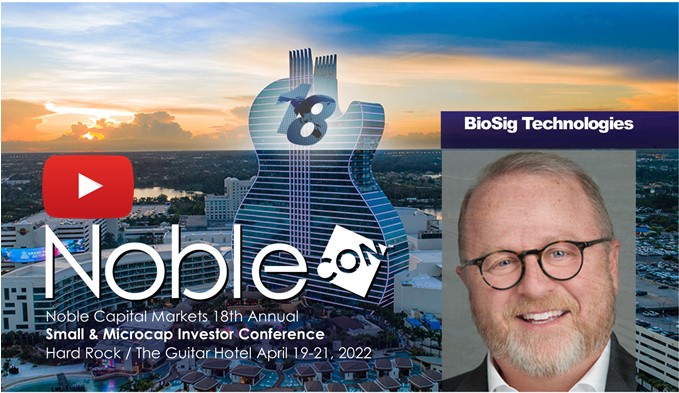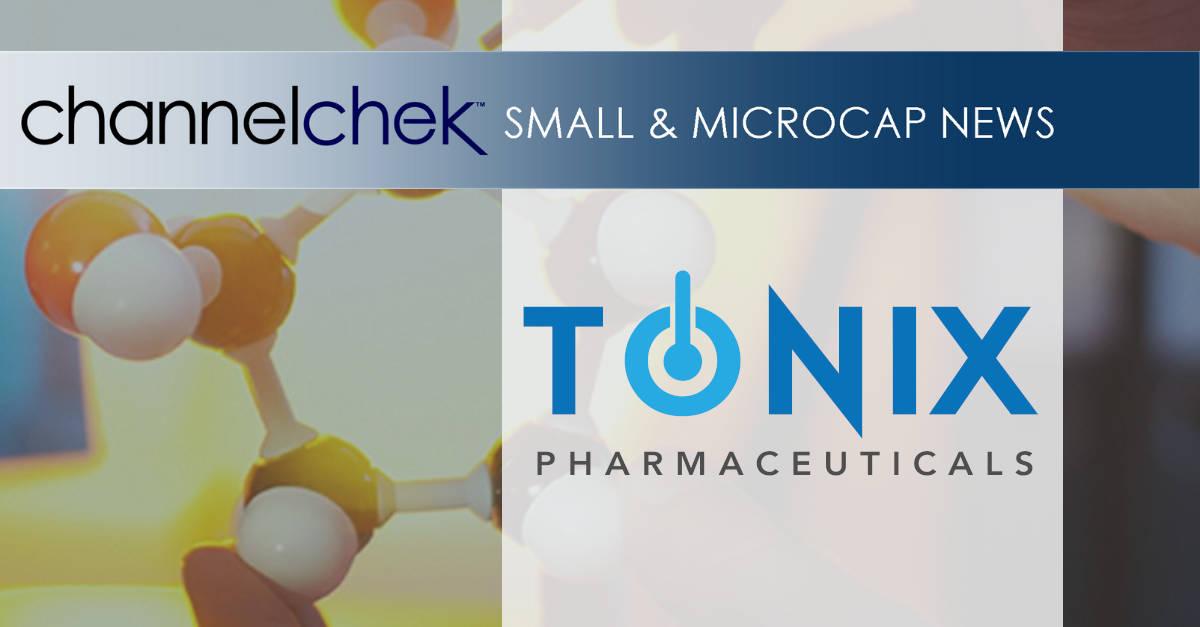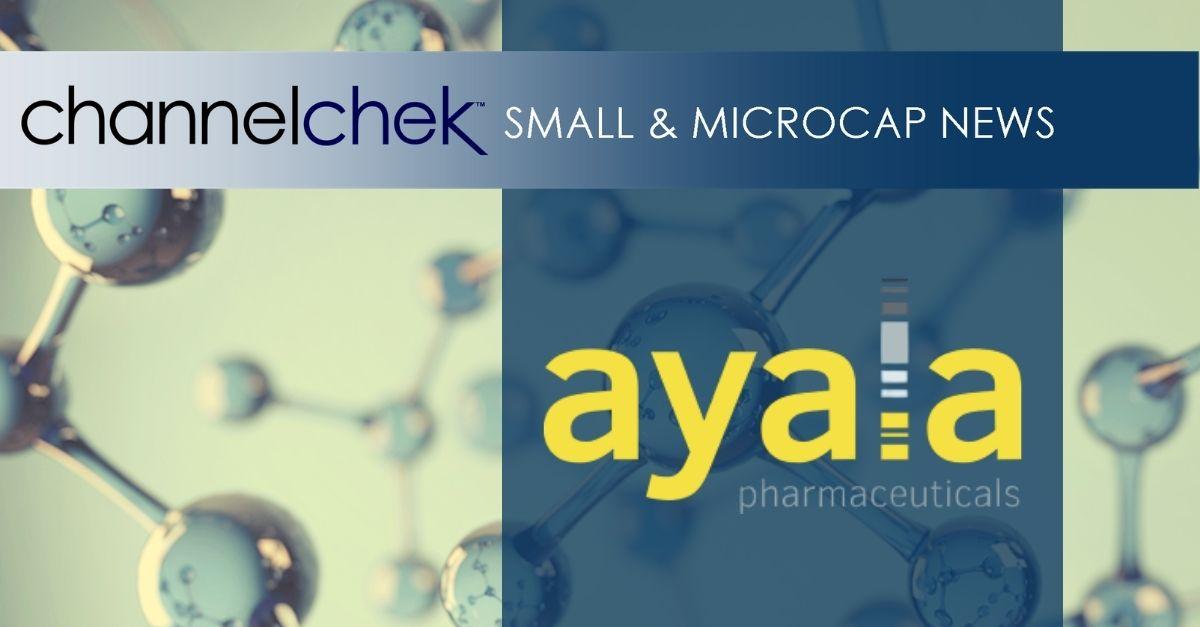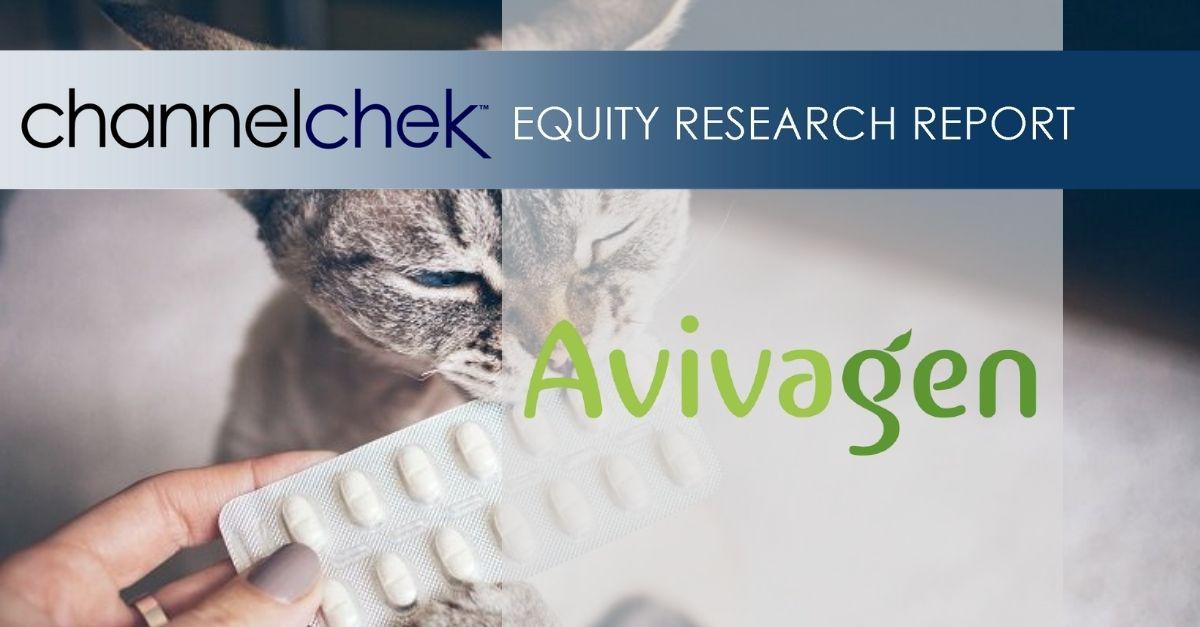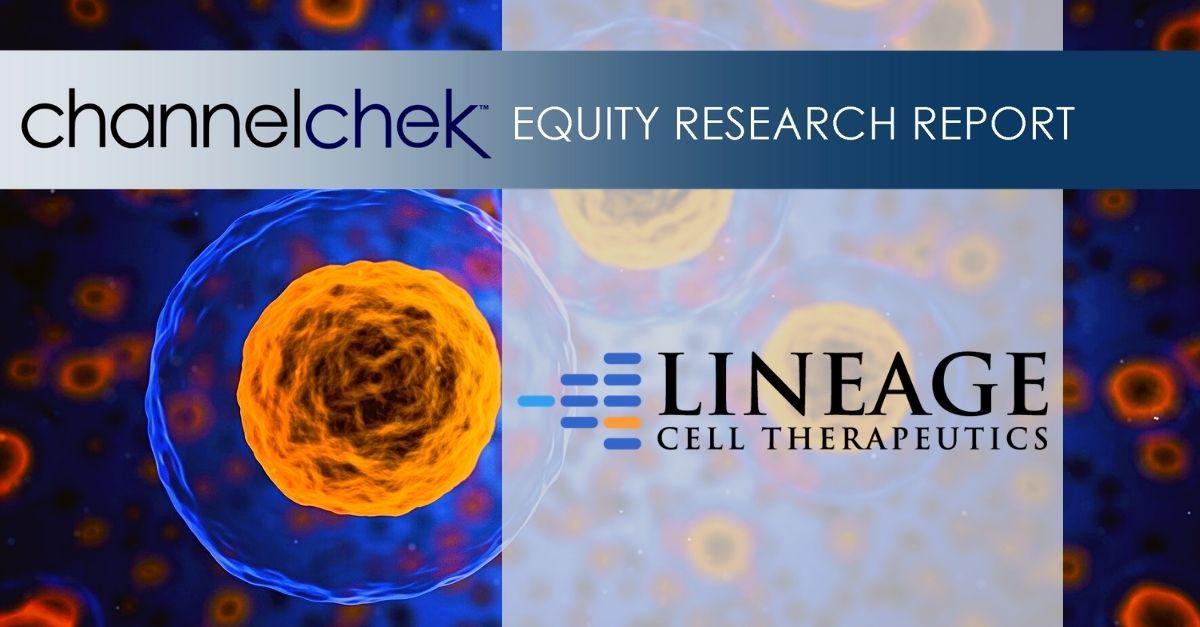
Ayala Pharmaceuticals Reports First Quarter 2022 Financial Results and Provides Corporate Update
Research, News, and Market Data on Ayala Pharmaceuticals
Interim data from Part A of RINGSIDE study of AL102 expected
mid-2022
REHOVOT, Israel and WILMINGTON, Del., May 16, 2022 (GLOBE NEWSWIRE) — Ayala Pharmaceuticals, Inc. (Nasdaq: AYLA), a clinical-stage oncology company focused on developing and commercializing small molecule therapeutics for patients suffering from rare and aggressive cancers, primarily in genetically defined patient populations, today announced first-quarter 2022 financial results and provided a corporate update.
“We continued to execute on advancing our clinical programs during the first quarter of 2022,” said Roni Mamluk, Ph.D., Chief Executive Officer of Ayala. “Our highest immediate priority is completing Part A of the RINGSIDE study evaluating AL102 in desmoid tumors and we are on target to announce initial interim data around mid-year. This will be followed by initiation of Part B, the randomized portion of the study, immediately thereafter. We are very encouraged by the positive feedback received from investigators in the study and by early signs of anti-tumor activity. Other important milestones expected this year include clinical updates from the ongoing ACCURACY trial of AL101 in adenoid cystic carcinoma and the planned initiation of a Phase 2 trial of AL102 in T-ALL.”
First-quarter 2022 and Recent Business Highlights
- Completed
enrollment of Part A of the Phase 2/3 RINGSIDE study of AL102 in desmoid
tumors: 42 patients have been enrolled in Part A of the RINGSIDE study, which is evaluating the safety and tolerability of AL102, as well as tumor volume by MRI at 16 weeks. Three dosing regimens of AL102 are being tested to determine the optimal dose regimen to advance forward.
- Initiated “Window
of Opportunity” study of AL101 in adenoid cystic carcinoma (ACC): The study, which is being conducted in collaboration with M.D. Anderson Cancer Center and the Adenoid Cystic Carcinoma (ACC) Research Foundation, is focused on determining the effects of AL101 for the treatment of ACC and other cancers. The goals of the study are to better understand the mechanism of AL101, determine the best treatment regimen and generate data for the future development strategy.
Upcoming Milestones
- Initial interim
data from pivotal Phase 2/3 RINGSIDE trial in desmoid tumors: Ayala expects to report an initial interim data read-out from Part A of Phase 2/3 RINGSIDE trial of AL102 in desmoid tumors around mid-2022. Part B of the study will be a double-blind placebo-controlled study enrolling up to 156 patients with progressive disease, randomized between AL102 or placebo. The study’s primary endpoint will be progression free survival with secondary endpoints including objective response rates, duration of response and patient reported quality of life measures.
- Clinical data from
Phase 2 ACCURACY trial of AL101 in ACC: The Phase 2 ACCURACY clinical trial is an open-label, single-arm, multi-center study to assess the clinical activity of AL101 using radiographic assessments of patients with R/M ACC demonstrating disease progression within 6 months prior to dosing. A poster at the 2022 ASCO Annual Meeting is expected to feature safety, efficacy, pharmacokinetics, and pharmacodynamics data from the 6mg AL101 cohort in the trial.
- Initiate Phase 2
clinical trial evaluating AL102 in T-cell acute lymphoblastic leukemia
(T-ALL): Ayala plans to begin a Phase 2 clinical trial evaluating AL101 in R/R T-ALL in the second half of 2022.
First-Quarter 2022
Financial Results
Cash Position: Cash and cash equivalents were $27.4 million as of March 31, 2021, as compared to $37.3 million at December 31, 2021.
Collaboration Revenue: Collaboration revenue was $0.4 million for the first quarter of 2022, as compared to $1.0 million for the corresponding quarter in 2021.
R&D Expenses: Research and development expenses were $7.5 million for the first quarter of 2022, compared to $6.9 million for the corresponding quarter in 2021.
G&A Expenses: General and administrative expenses were $2.4 million for the first quarter of 2022, compared to $2.3 million for the first quarter of 2021.
Net Loss: Net loss was $10.0 million for the first quarter ended March 31, 2022, resulting in basic and diluted net loss per share of $0.66. This compares with a net loss of $9.6 million for the first quarter ended March 31, 2021, or basic and diluted net loss per share of $0.74.
For further details on the company’s financial results, refer to form Quarterly Report on Form 10-Q for the three months ended March 31, 2022, filed with the SEC on May 16, 2022.
About Ayala
Pharmaceuticals
Ayala Pharmaceuticals, Inc. is a clinical-stage oncology company focused on developing and commercializing small molecule therapeutics for patients suffering from rare and aggressive cancers, primarily in genetically defined patient populations. Ayala’s approach is focused on predicating, identifying and addressing tumorigenic drivers of cancer through a combination of its bioinformatics platform and next-generation sequencing to deliver targeted therapies to underserved patient populations. The company has two product candidates under development, AL101 and AL102, targeting the aberrant activation of the Notch pathway with gamma secretase inhibitors to treat a variety of tumors including Adenoid Cystic Carcinoma, T-cell Acute Lymphoblastic Leukemia (T-ALL), Desmoid Tumors and Multiple Myeloma (MM) (in collaboration with Novartis). AL101, has received Fast Track Designation and Orphan Drug Designation from the U.S. FDA and is currently in a Phase 2 clinical trial for patients with ACC (ACCURACY) bearing Notch activating mutations. AL102 is currently in a Pivotal Phase 2/3 clinical trials for patients with desmoid tumors (RINGSIDE) and is being evaluated in a Phase 1 clinical trial in combination with Novartis’ BMCA targeting agent, WVT078, in Patients with relapsed/refractory Multiple Myeloma. For more information, visit www.ayalapharma.com.
Contacts:
Investors:
Joyce Allaire
LifeSci Advisors LLC
+1-617-435-6602
jallaire@lifesciadvisors.com
Ayala Pharmaceuticals:
+1-857-444-0553
info@ayalapharma.com
Forward-Looking
Statements
This press release contains forward-looking statements within the meaning of the Private Securities Litigation Reform Act of 1995. All statements contained in this press release that do not relate to matters of historical fact should be considered forward-looking statements, including statements relating to our development of AL101 and AL102, the promise and potential impact of our preclinical or clinical trial data, the timing of and plans to initiate additional clinical trials of AL101 and AL102, the timing and results of any clinical trials or readouts, our participation at scientific or medical conferences, including the 2022 ASCO Annual Meeting, the sufficiency of cash to fund operations, and the anticipated impact of COVID-19, on our business. These forward-looking statements are based on management’s current expectations. The words ”may,” “will,” “should,” “expect,” “plan,” “anticipate,” “could,” “intend,” “target,” “project,” “estimate,” “believe,” “predict,” “potential” or “continue” or the negative of these terms or other similar expressions are intended to identify forward-looking statements, although not all forward-looking statements contain these identifying words.
These statements are neither promises nor guarantees, but involve known and unknown risks, uncertainties and other important factors that may cause our actual results, performance or achievements to be materially different from any future results, performance or achievements expressed or implied by the forward-looking statements, including, but not limited to, the following: we have incurred significant losses since inception and anticipate that we will continue to incur losses for the foreseeable future. We are not currently profitable, and we may never achieve or sustain profitability; we will require additional capital to fund our operations, and if we fail to obtain necessary financing, we may not be able to complete the development and commercialization of AL101 and AL102; we have identified conditions and events that raise substantial doubt about our ability to continue as a going concern; we have a limited operating history and no history of commercializing pharmaceutical products, which may make it difficult to evaluate the prospects for our future viability; we are heavily dependent on the success of AL101 and AL102, our most advanced product candidates, which are still under clinical development, and if either AL101 or AL102 does not receive regulatory approval or is not successfully commercialized, our business may be harmed; due to our limited resources and access to capital, we must prioritize development of certain programs and product candidates; these decisions may prove to be wrong and may adversely affect our business; the outbreak of COVID-19, may adversely affect our business, including our clinical trials; our ability to use our net operating loss carry forwards to offset future taxable income may be subject to certain limitations; our product candidates are designed for patients with genetically defined cancers, which is a rapidly evolving area of science, and the approach we are taking to discover and develop product candidates is novel and may never lead to marketable products; we were not involved in the early development of our lead product candidates; therefore, we are dependent on third parties having accurately generated, collected and interpreted data from certain preclinical studies and clinical trials for our product candidates; enrollment and retention of patients in clinical trials is an expensive and time-consuming process and could be made more difficult or rendered impossible by multiple factors outside our control; if we do not achieve our projected development and commercialization goals in the timeframes we announce and expect, the commercialization of our product candidates may be delayed and our business will be harmed; our product candidates may cause serious adverse events or undesirable side effects, which may delay or prevent marketing approval, or, if approved, require them to be taken off the market, require them to include safety warnings or otherwise limit their sales; the market opportunities for AL101 and AL102, if approved, may be smaller than we anticipate; we may not be successful in developing, or collaborating with others to develop, diagnostic tests to identify patients with Notch-activating mutations; we have never obtained marketing approval for a product candidate and we may be unable to obtain, or may be delayed in obtaining, marketing approval for any of our product candidates; even if we obtain FDA approval for our product candidates in the United States, we may never obtain approval for or commercialize them in any other jurisdiction, which would limit our ability to realize their full market potential; we have been granted Orphan Drug Designation for AL101 for the treatment of ACC and may seek Orphan Drug Designation for other indications or product candidates, and we may be unable to maintain the benefits associated with Orphan Drug Designation, including the potential for market exclusivity, and may not receive Orphan Drug Designation for other indications or for our other product candidates; although we have received Fast Track designation for AL101, and may seek Fast Track designation for our other product candidates, such designations may not actually lead to a faster development timeline, regulatory review or approval process; we face significant competition from other biotechnology and pharmaceutical companies and our operating results will suffer if we fail to compete effectively; we are dependent on a small number of suppliers for some of the materials used to manufacture our product candidates, and on one company for the manufacture of the active pharmaceutical ingredient for each of our product candidates; our existing collaboration with Novartis is, and any future collaborations will be, important to our business. If we are unable to maintain our existing collaboration or enter into new collaborations, or if these collaborations are not successful, our business could be adversely affected; enacted and future healthcare legislation may increase the difficulty and cost for us to obtain marketing approval of and commercialize our product candidates, if approved, and may affect the prices we may set; if we are unable to obtain, maintain, protect and enforce patent and other intellectual property protection for our technology and products or if the scope of the patent or other intellectual property protection obtained is not sufficiently broad, our competitors could develop and commercialize products and technology similar or identical to ours, and we may not be able to compete effectively in our markets; we may engage in acquisitions or in-licensing transactions that could disrupt our business, cause dilution to our stockholders or reduce our financial resources; and risks related to our operations in Israel could materially adversely impact our business, financial condition and results of operations.
These and other important factors discussed under the caption “Risk Factors” in our Quarterly Report on Form 10-Q for the three months ended March 31, 2022 filed with the U.S. Securities and Exchange Commission (SEC) on May 16, 2022 and our other filings with the SEC, could cause actual results to differ materially from those indicated by the forward-looking statements made in this press release. Any such forward-looking statements represent management’s estimates as of the date of this press release. New risk factors and uncertainties may emerge from time to time, and it is not possible to predict all risk factors and uncertainties. While we may elect to update such forward-looking statements at some point in the future, except as required by law, we disclaim any obligation to do so, even if subsequent events cause our views to change. Although we believe the expectations reflected in such forward-looking statements are reasonable, we can give no assurance that such expectations will prove to be correct. These forward-looking statements should not be relied upon as representing our views as of any date subsequent to the date of this press release.
AYALA
PHARMACEUTICALS, INC.
CONDENSED CONSOLIDATED BALANCE SHEETS
(Unaudited)
(In thousands, except share and per share amounts)
|
|
|
March 31
|
|
|
December 31
|
|
|
|
|
2022
|
|
|
2021
|
|
|
|
|
(Unaudited)
|
|
|
|
|
|
CURRENT
ASSETS:
|
|
|
|
|
|
|
|
Cash and Cash Equivalents
|
|
$
|
27,050
|
|
|
$
|
36,982
|
|
|
Short-term Restricted Bank Deposits
|
|
|
122
|
|
|
|
122
|
|
|
Trade Receivables
|
|
|
638
|
|
|
|
–
|
|
|
Prepaid Expenses and other Current Assets
|
|
|
1,492
|
|
|
|
2,636
|
|
|
Total Current Assets
|
|
|
29,302
|
|
|
|
39,740
|
|
|
LONG-TERM
ASSETS:
|
|
|
|
|
|
|
|
|
|
Other Assets
|
|
$
|
255
|
|
|
$
|
267
|
|
|
Property and Equipment, Net
|
|
|
1,090
|
|
|
|
1,120
|
|
|
Total Long-Term Assets
|
|
|
1,345
|
|
|
|
1,387
|
|
|
Total Assets
|
|
$
|
30,647
|
|
|
$
|
41,127
|
|
|
LIABILITIES AND STOCKHOLDERS’
EQUITY:
|
|
|
|
|
|
|
|
|
|
CURRENT
LIABILITIES:
|
|
|
|
|
|
|
|
|
|
Trade Payables
|
|
$
|
2,564
|
|
|
$
|
3,214
|
|
|
Other Accounts Payables
|
|
|
2,793
|
|
|
|
3,258
|
|
|
Total Current Liabilities
|
|
|
5,357
|
|
|
|
6,472
|
|
|
LONG
TERM LIABILITIES:
|
|
|
|
|
|
|
|
|
|
Long-term Rent Liability
|
|
|
472
|
|
|
|
497
|
|
|
Total Long-Term Liabilities
|
|
$
|
472
|
|
|
$
|
497
|
|
|
STOCKHOLDERS’ STOCKHOLDERS’ EQUITY:
|
|
|
|
|
|
|
|
|
|
Common Stock of $0.01 par value per share; 200,000,000 shares authorized at December 31, 2021 and March 31, 2022; 14,085,283 and 14,080,383 shares issued at March 31, 2022 and December 31, 2021, respectively; 13,972,778 and 13,956,035 shares outstanding at March 31, 2022 and December 31, 2021, respectively
|
|
$
|
139
|
|
|
$
|
139
|
|
|
Additional Paid-in Capital
|
|
|
145,847
|
|
|
|
145,160
|
|
|
Accumulated Deficit
|
|
|
(121,168
|
)
|
|
|
(111,141
|
)
|
|
Total Stockholders’ Equity
|
|
|
24,818
|
|
|
|
34,158
|
|
|
Total Liabilities and Stockholders’ Equity
|
|
$
|
30,647
|
|
|
$
|
41,127
|
|
|
|
|
|
|
|
|
|
|
|
AYALA
PHARMACEUTICALS, INC.
CONDENSED CONSOLIDATED STATEMENTS OF OPERATIONS
(Unaudited)
(In thousands, except share & per share amounts)
|
|
|
For the
three months
Ended
|
|
|
|
|
March 31,
|
|
|
|
|
2022
|
|
|
2021
|
|
|
Revenues from licensing agreement and others
|
|
$
|
368
|
|
|
$
|
974
|
|
|
Cost of services
|
|
|
(368
|
)
|
|
|
(974
|
)
|
|
Gross profit
|
|
|
—
|
|
|
|
—
|
|
|
Operating expenses:
|
|
|
|
|
|
|
|
|
|
Research and development
|
|
|
7,503
|
|
|
|
6,925
|
|
|
General and administrative
|
|
|
2,441
|
|
|
|
2,303
|
|
|
Total operating expenses
|
|
|
9,944
|
|
|
|
9,228
|
|
|
Operating loss
|
|
|
(9,944
|
)
|
|
|
(9,228
|
)
|
|
Other income
|
|
|
90
|
|
|
|
–
|
|
|
Financial Income (Loss), net
|
|
|
16
|
|
|
|
(92
|
)
|
|
|
|
|
|
|
|
|
|
|
|
Loss before income tax
|
|
|
(9,838
|
)
|
|
|
(9,320
|
)
|
|
Taxes on income
|
|
|
(189
|
)
|
|
|
(248
|
)
|
|
Net loss attributable to common stockholders
|
|
|
(10,027
|
)
|
|
|
(9,568
|
)
|
|
Net Loss per share attributable to common stockholders, basic and diluted
|
|
$
|
(0.66
|
)
|
|
$
|
(0.74
|
)
|
|
Weighted average common shares outstanding, basic and diluted
|
|
|
15,301,065
|
|
|
|
12,888,340
|
|
|
|
|
|
|
|
|
|
|
|




